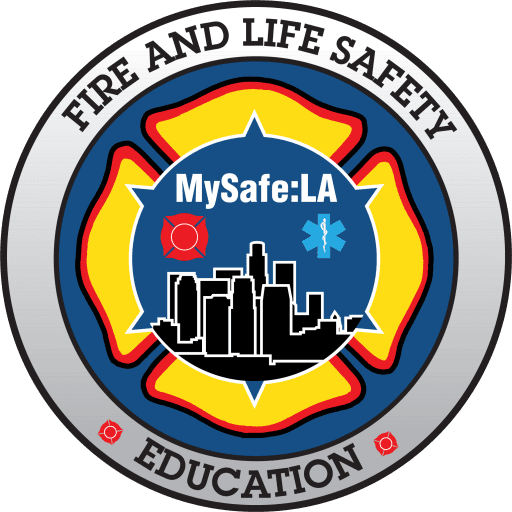The Los Angeles City Community Wildfire Protection Plan (CWPP)
A Community-Driven Strategic Plan to Manage Wildfire Risk
Over the past fifteen months, MySafe:LA has been in the process of formulating a Community Wildfire Protection Plan (CWPP) for the City of Los Angeles. Unlike contingency plans designed for first responders, a CWPP is targeted at the involved community and aims to disseminate essential information concerning infrastructure, hazards, response strategies, and mitigation measures related to wildfire risks.
Why Does Los Angeles Need a CWPP?
According to the 2025 CAL FIRE Very High Fire Severity Zone maps, the San Fernando Valley is entirely encircled by areas at extreme wildfire risk. This includes some of L.A.’s most beloved canyons, such as Laurel Canyon, Runyon Canyon, Mandeville Canyon, Coldwater Canyon, and Beachwood Canyon, all of which could face wildfires. Just as the city remains at risk for a significant earthquake in the coming years, these fire threats are a reminder to stay prepared.
A complex city
The City of Los Angeles is a complex environment, with 178 neighborhoods and more than 90 different languages spoken. It is the heart of the motion picture industry, and a diverse array of cultures, communities, and languages. It is the seat of Los Angeles County, and the second most populous city (after the City of New York) in the United States.
The City and the County share many connections, including cultural, economic, and geographic links. Population density varies widely, from just one person per square mile in some mountain areas to an incredible 50,000 people per square mile in downtown Los Angeles. Altogether, nearly four million residents proudly call the City of Los Angeles their home. NOTE: The County of Los Angeles has its own CWPP and is in the process of updating it. Due to the size of both the county and the city, having two independent CWPP documents is not only relevant but essential.
The City of Los Angeles is massive, and its boundaries are unique. Due to the size and scope of the land involved, it has a varied topography, climbing from sea level at the Venice beach community to Mount Lukens, which rises above 5,100 feet.
The city began as a charming Mexican-style village covering 28 square miles when it was established in 1781. Over the years, it has grown steadily, thanks to several land annexations, and now enjoys a complete monopoly on the water supply from the Owens River (which rises from the Sierra Nevada, 230 miles northeast of the city). When the annexations of Wilmington and San Pedro took place, a narrow strip of land connected the harbor to the downtown community of the city. Currently, the City of Los Angeles encircles five independent cities—Beverly Hills, Culver City, West Hollywood, Universal City, and San Fernando.
A mediterranean climate
Another important factor to consider is the L.A. climate model. Los Angeles has traditionally enjoyed a warm, Mediterranean-like climate, which offers a naturally mild environment. This is thanks to three main natural factors: the region’s position away from the strongest North Pacific winter storms, a layer of cool marine air that softens the summer heat, and the tall mountain ranges that provide a protective barrier against extreme desert heat and cold snaps.
Los Angeles traditionally has two main seasons: a dry, mildly warm period from April to early November, and a wetter season from November to March, when cooler air and rain are more common. On average, the region receives about 15 inches of rain annually, though during an El Niño year, this can increase by 50% or more.
Climate change is impacting these patterns, and a Community Wildfire Protection Plan (CWPP) can help residents better understand these changes, not just in weather but also in how they affect everyday life. In 2023, nine atmospheric rivers brought over 11.5 inches of rain to Los Angeles in just two weeks. While this rainfall was beautiful to see, it unfortunately fueled the devastating wildfires later in the season. 2025 has already been extremely dangerous relative to the impact of wildfires, and the coming year may see the highest level of danger in nearly a decade. Wildfires are now 400% faster and destructive than wildfires that occurred in 2020.
So, what does climate change mean for us? Well, it brings more intense heat waves that can be dangerous, along with more frequent droughts. The ongoing influence of human activity adds to our risks, too. We also need to be aware of the possibility of landslides, mudslides, flood warnings, and, naturally, wildfires. These challenges remind us of the importance of taking care of our planet and staying prepared.
So, what does climate change mean for us? Well, it brings more intense heat waves that can be dangerous, along with more frequent droughts. The ongoing influence of human activity adds to our risks, too. We also need to be aware of the possibility of landslides, mudslides, flood warnings, and, naturally, wildfires. These challenges remind us of the importance of taking care of our planet and staying prepared.
Read the Executive Summary

When Will the CWPP be Published?
A specific publication date has not been established, but we’re targeting the end of 2025 for the initial release of the document.
Isn't a Plan Like This Too Big to Read?
The CWPP for the City of Los Angeles is a comprehensive and essential document. Given the diverse neighborhoods, canyons, infrastructure, population densities, and history of fires, it’s vital to include strategies that protect every part of our community. To make this information more accessible and user-friendly, the plan will be available online, making it easier to find individual sections.
MySafe:LA understands how valuable it is for the public to have a clear, practical wildfire plan at their fingertips. That’s why we’re excited to collaborate with various Los Angeles City Council Districts to develop “ancillary CWPP” plans tailored to the unique geography and communities of each district. These shorter, approximately 25 to 35-page guides will be straightforward for anyone to understand. They will also reference the main CWPP where appropriate, ensuring consistency and completeness.
Join our wildfire updates
Stay up-to-date with Wildfire:LA activities!

